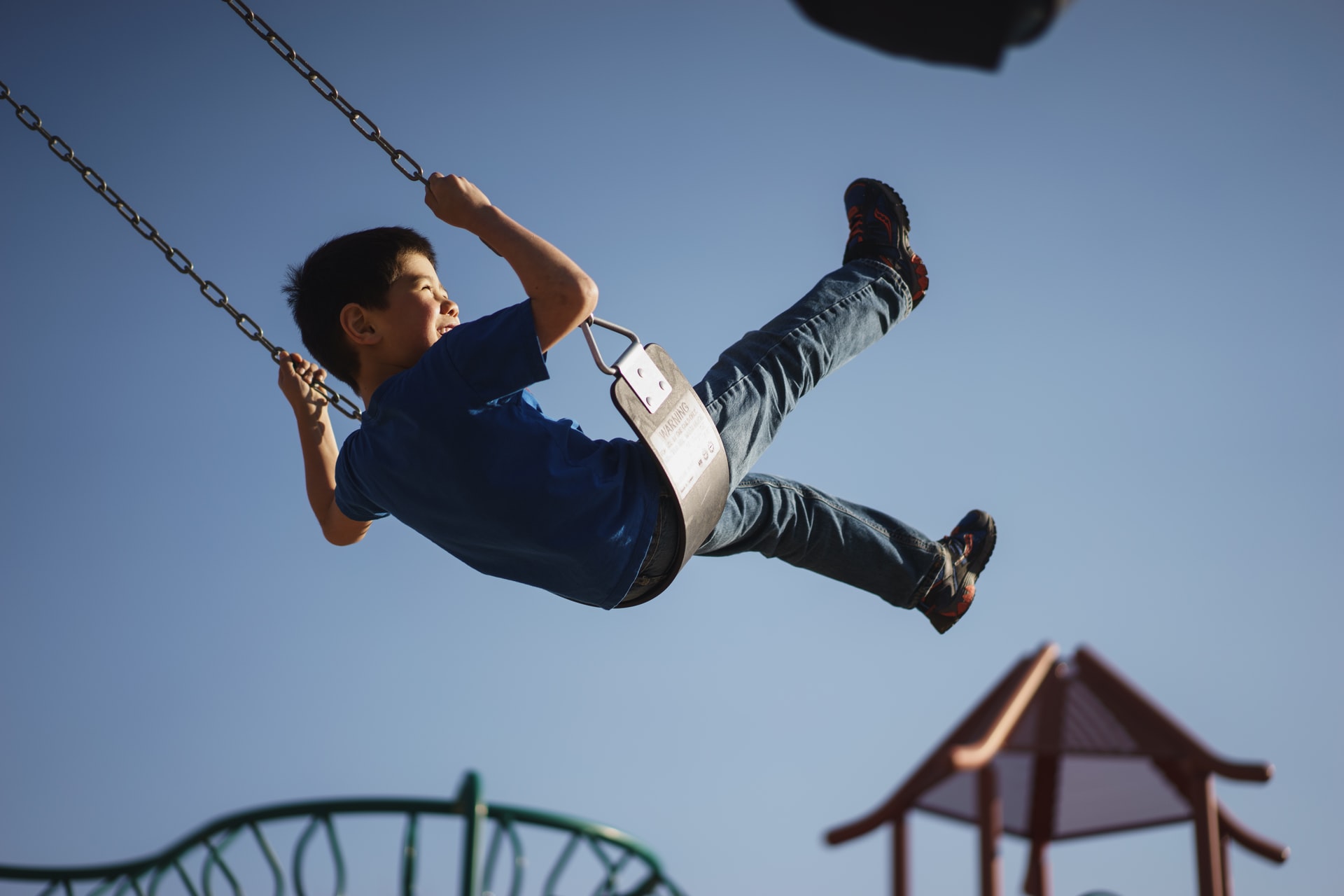
28 Oct 16 powerful ways to build resilience in kids
Resilience is one of the most valuable characteristics a child can develop. Everyone faces setbacks and challenging times, and building resilience in your kids is a gift that will set them up for greater success and happiness throughout their lives.
Nana korobi, ya oki is a Japanese proverb that means “fall down seven times, stand up eight.” It epitomises what it means to be resilient. Resilience is defined as:
The ability to withstand adversity and bounce back from difficult life events.
16 ways to build resilience in kids
The human race has always needed resilience, both physical and mental, in order to cope with the challenges life throws at us. Developing resilience is a skill and a practice, so starting as a young child is perfect. We’ve put together a list of practical and effective ways to do just that.
Here’s how to develop resilience in children:
1. Play sport or practise martial arts
Sports are an incredibly common yet effective way to build resilience in children of all ages. Sport can be a metaphor for life, with many highs and lows along the way. Sports and martial arts introduce children to many key aspects of adulthood (and business!) including the woes of losing, the struggle to make the team and the incredible payoffs that hard work brings. One of the world’s richest men, Phil Knight, was raised as a competitive runner, giving him the experience and resilience to create Nike!
2. Get outside and into the unknown
We rarely get physically lost anymore. GPS and the internet means we’re never more than a few clicks from knowing exactly which way to turn. But it’s often when we lose the way that we find out the most about ourselves. We learn how we handle pressure and uncertainty, how we assess our options and we think on our feet to solve the problem.
Encourage kids to explore new surroundings and let them navigate the obstacles they encounter. Richard Branson’s mother, Eve Branson, famously dropped him off a few miles from home and let him find his way back! We’re absolutely not advocating this exercise. However, a similar effect can be achieved within safe, child friendly environments such as parks, playgrounds and other activity facilities.
3. Play video games
Okay, hear us out with this one!
When we play video games, we lose (or die!) frequently. It’s part of how games work; they’re not designed to be completed first time around. Gaming forces kids to show their resolve by trying, failing and trying again. Maybe they’ll use a different tactic next time. Maybe they need to practice more to win. Either way, coming back after a loss is a normal part of gaming and this attitude can carry over into the real world.
4. Build stable relationships
Building strong relationships from an early age can play a role in becoming a resilient and mentally strong adult. While relationships themselves can be incredibly resilient, a child’s impression of a relationship is formed very early on, whether that’s the relationship between their parents or the ones they have with their first friends.
Experts recommend you set the example by showing solidarity as a parent in all of your relationships, and discourage behaviours that aim to separate a child from their friends or other classmates. Instead, promote long term relationships in which children work together to overcome differences. Working together on projects and challenges helps reach the best outcomes for all, teaching valuable skills along the way.
5. Push their comfort zone
Here, the goal is to try something a young person is a little nervous about but is still willing to try. This means when they succeed, they’ll build confidence and have belief that they can overcome other things. Their comfort zone expands and they start to approach the unknown with enthusiasm. Even when they’re not sure they can do something, they remember the last time they thought that, and remember how well they did in pushing through. They will remember when they last had superpowers.
If they don’t succeed first time, which they probably won’t, get them back on their feet and trying again as quickly as possible. This can avoid them having a negative experience that reinforces their self-doubt. Instead, trying again and succeeding, no matter how long it takes, builds their focus and resolve to come out on top.
6. Reframe rejection and failure
Failure is part of life. But what separates capable people from those who accept the failure is how they use it. Dealing with failure means learning from it, and using it to become better. Every failure can be seen as finding out a way to not do something, meaning you’re one step closer to working out what will work.
Whenever a resilient entrepreneur hears the answer “no” to a request or a pitch, they interpret it as “not yet”. Just because a buyer or investor isn’t right for them now, it doesn’t mean they never will be; it just means they need to do something different. Maybe it means they’re not pitching to the right person at all.
We can’t win every single time. Even giant businesses like Apple and Microsoft share the market with each other; they both can’t win all of the time. Keep trying and keep asking, and reframe what failure means for children. A useful mantra here is, “you win or you learn”.
More way to nurture resilience:
7. Don’t take things personally
It’s easy to take rejection personally, to almost feel like we’ve been victimised. However, this can lead to unhelpful thought patterns of low self-worth and feelings of helplessness. A resilient mindset requires that you don’t take failure and rejection as a judgement on your person, character or anything else!
It’s possible to bounce back from challenges by working hard, finding a new route or asking for help. Use rejection as a way to learn and reflect, but don’t take it personally. It’s very likely not about you. If a young person in your care is feeling down about a rejection, redirect their attention to how they’ll try again and what they will change this time. Help them find the way forward.
8. Share stories of resilience
Role models are incredibly powerful. Children learn from their own experience, but they also learn from the experience of others. Talk to them about times when you faced a challenge that you eventually overcame through persistence and resilience. Stories about family members or other people they know will demonstrate that being resilient is achievable for them.
Want more inspiration? Find stories, movies and documentaries about people that have overcome adversity by showing resolve and resilience. We’ve helped out by shortlisting some films promoting a positive mindset in kids.
9. Understand emotional responses
It’s totally normal to have an emotional response to loss or failure. What’s important is to recognise the emotional response and develop self-awareness. This can be a hugely powerful tool if developed from a young age. Ask a child how they feel about a situation. Ask them to describe that feeling and what it makes them feel like doing or saying. Ask if they could choose to feel a different way or if those feelings are helpful in any way. Embracing emotions and understanding them can lead to proactively channelling energy into an alternative mindset.
10. Find the positives
With nearly everything bad that happens, there is an upside. It’s almost always possible to make it positive. Your ice cream fell on the floor? Fine. A chance to reconsider your dessert choices. You dropped $5? Great! At least it wasn’t $50! Your favourite TV show got cancelled? Now’s the time to read that book you wanted to start.
Conditioning your brain to find the positives in any situation is a fantastic way to get over your loss quickly and make the most of your finite time on earth. Life’s too short for sustained sadness.
11. Don’t always fix their problems
It’s really easy to put things right for kids, but it’s not always the best thing to do. There are two reasons:
- It teaches that there are no consequences to getting something wrong or not making an effort
- It teaches them to rely on others for solutions or fixes to their challenges
If a child learns they’re going to have to get something right, they’ll put more effort in the first time. If they make mistakes, they’ll try again. Leaving them to fix things improves their work ethic, practical thinking and resilience.
12. Help them get perspective
Finding perspective when feeling fearful, angry or nervous is a useful skill to hold, but it can be incredibly challenging in the moment. If you’ve ever had someone tell you to calm down when you’re feeling flustered, you’ll know what we mean! When someone is acting erratically, delve into it. Help them figure out what triggered them and why.
As tough as it can be, snapping out of unhelpful emotions by tracing back to the trigger and finding perspective is something worth developing as a child. Many of the challenges facing our kids are first world problems, and remembering this can help avoid blowing an issue way out of proportion.
13. Practice gratitude
Practicing gratitude is something most of us could do more of. Being grateful emphasises that even if some things aren’t going our way, there are things in life that we are thankful we have. Gratitude cannot exist alongside sadness or comparison. Focusing on appreciation can make our failures or mistakes less prominent in the grand scheme of things.
At the end of each day, or at dinner time, try sharing three things each of you are grateful for.
14. Align with the solution
When something goes wrong, it’s really easy to focus on the problem and begin worrying about all the bad things it might means. It’s far better to align with the solution. Ask solution-based questions. How am I going to make this better? What’s the best next step? What do I need in order to fix this?
Going into problem-solving mode, then acting upon it, means we’re calibrating with the solution and means we are far more likely to improve our situation. Dwelling on what’s happened and speculating on the consequences isn’t going to help anything.
15. Failure is part of the journey, so focus on your goals
The journey to success is not a straight one. There will be bumps and detours along the way. The key is to expect these things to occur, or at least, not be completely sidetracked if something happens.
Try brushing it off with a sentiment like: “Something like this was bound to happen, it’s part of the journey.”
Instil a greater sense of purpose in your child by having some long term goals or a vision. If they want to be successful in school, a sport, or another hobby, one bad exam, lesson or match does not mean they won’t achieve their goal. Short term failures are not an indicator of long term success.
16. Model resilience yourself
Children are like sponges. They soak up everything around them and mimic the language and behaviours of those they spend the most time with. This means that you can have a huge impact on their resilience by demonstrating resilience yourself. The next time you feel stressed or encounter a problem, remember that how you deal with it will be a marker for how they deal with similar things in the future
Practice taking a breath, assessing the situation and calmly finding a solution. Easier said than done, we know, but perhaps knowing that someone is learning from your actions will be the reminder that’s required.
Resilience in children is crucial for their wellbeing and long term success and happiness. Small tweaks to how you frame situations and talk to them could be all they need to build this quality in their future years.
Know any children aged 6-9? If so, the Clever Tykes books could be perfect to instil some resilience and resourcefulness. Check out our store on Amazon UK or Amazon US.
If you liked this article, you should read:
How to develop resourcefulness in kids





